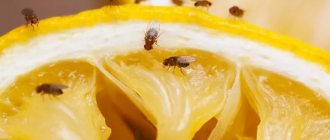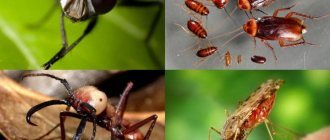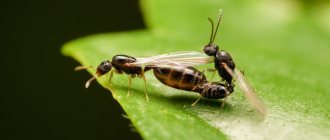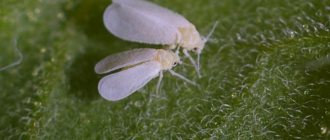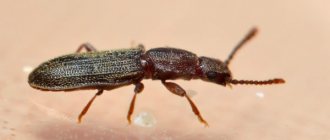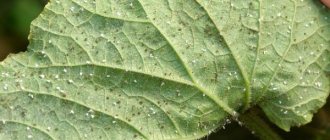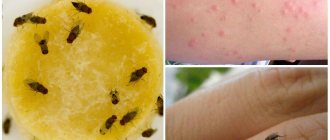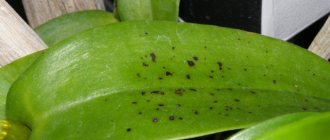Prevention and safety measures against flies
The basic rule of hygiene always remains in the first place, which concerns not only washing your hands, but also the proper handling of food before eating.
It is important to keep household items and utensils in proper condition. If food remains on the table in the summer, it must be covered with a special lid, mesh, or placed in an airtight container.
If flies enter the house, it is necessary to carry out special treatment using repellents. If an egg laying site is discovered, it must be thoroughly treated with chlorine-containing agents and chemical aerosols against these insects.
It is necessary to take care of the area where the garbage container is located - this area must be kept clean. Outdoor toilets must be equipped with special outlets for water flushing and basic cleaning of the premises. For barns and other premises intended for keeping livestock, there are special traps for winged pests. These are sticky tapes, hanging feeders with a sticky bottom that catch insects.
Follow basic hygiene rules, concentrate on the condition of products and methods of storing them, carry out the necessary treatment of premises from harmful arthropods - all this will help protect your home and the people living in it from discomfort and the danger of contracting infectious diseases. Flies are familiar insects that attack people's homes from early spring to late autumn
All types of flies are associated by humans with dirt and various diseases. There are approximately 75 thousand species of these insects, each of which has its own characteristics
Flies are familiar insects that attack people's homes from early spring to late autumn. All types of flies are associated by humans with dirt and various diseases. There are approximately 75 thousand species of these insects, each of which has its own characteristics.
What attracts flies to our homes
So why do such big flies appear in the house and how to get rid of them? It is worth saying first of all that room temperature is optimal for them. Like humans, this insect quite likes temperatures of 23-25°C. That is why in winter they tend to hide in warm and dark corners of the house: in order to successfully overwinter and lay eggs. And in the spring they fly out from all the cracks in large numbers. This is the answer to the question of where flies in the house come from.
If a lot of them suddenly appear, even if there are nets on the windows, it means that larvae have already been deposited somewhere in the cracks inside the premises. By spring or summer they had become independent individuals and signaled the warming with their buzzing, annoying flight.
When flies wake up, they begin to lay eggs in large numbers.
Why else do they like our neighborhood so much and where do these flies come from? The answer is very simple: they completely share our food preferences. The proximity to food in the apartment attracts these pests, because the remains of decomposed food are not only food for them, but also a medium for the development of larvae . Knowing this is already a good incentive to always keep your home clean. But to maintain it, you need to follow a few more rules:
- Use tight-fitting trash can lids;
- products must also be carefully packaged;
- the table must be thoroughly wiped of crumbs;
- There should not be even small food remains on the floor.
In addition to food, flying insects also require access to water: therefore, the taps must be tightly closed and the sinks wiped dry.
Flies flock to the smell of food
Lifestyle, nutrition, reproduction
Adult insects are very maneuverable and can change direction to the exact opposite very abruptly. Thanks to the rapid movement of its wings, the fly often hovers in one place and seems to hover in the air above the flowers, as if choosing which one has the most delicacy.
The larvae are voracious, and the older they get, the more and more actively they eat. They feed mainly on small insect pests - caterpillars, psyllids, spider mites, small butterflies and aphids. They literally suck the latter alive. One syrphid larva can suck up to 200 aphids in one day, and one can imagine how a whole brood of such larvae will benefit the garden. It is on plants affected by aphids that one can often notice a cluster of syrphid larvae. In addition, the larvae can be localized in the nests of other insects, rotten rotting wood, and on large plants.
In the larval stage, flies hoverflies and overwinter. In the spring, pupae appear from them, and by the end of June, young adults appear, starting their years already in July.
During the period of courtship with females, males hover in the air above them and make a sound similar to gurgling. A similar, but slightly different sound can be heard from syrphids at other times, hence their popular name - hoverflies. Mating of these flies can occur right in the air. Also, while hovering, males protect their territory, driving away rivals.
After a while, the fertilized female lays eggs directly on the fruit trees. At one time she can lay 150-200 eggs. The emerging larvae become good crop fighters, destroying harmful insects. Therefore, in order for hoverflies to choose a garden or vegetable garden, they need more umbrella and flowering plants (both cultivated and wild), then there is a chance to acquire such useful neighbors for a permanent time.
Appearance Features
Externally, the green carrion fly differs from the house fly in its larger body size, bright green color with iridescence, and a metallic tint. The external and internal structure of the body is ideally suited to her lifestyle.
- Size from 8 mm to 2 cm.
- The entire body is densely covered with short villi.
- There are small antennae on the head.
- The head is well defined with large red and brown eyes.
- A pair of transparent wings with well-marked membranes. Located along the body, slightly splayed to the sides.
- The second pair of wings are underdeveloped and are called halteres. They perform an important function - they maintain balance in the air, allow you to hover in one place, and also create sound during flight.
- 6 pairs of paws. A special fatty substance collects at the tips, which allows flies to easily stay on any surface in a vertical or horizontal position. This explains how the insect sits calmly, crawls on the ceiling and on the glass of the windows.
A photo of a green fly is shown below. The insect lives in the wild and enters the house by accident or under certain circumstances.
Interesting!
To search for food, a fly can fly up to 20 km, and can fly almost 3 km without stopping. Orients with a sensitive sense of smell and excellent vision.
Green fly
What does a fly look like?
Everyone probably knows what this insect looks like, but it’s still worth looking at the presented photos of various flies.
The length of its body ranges from a millimeter level to two cm. The hairy body of the fly has two wings with membranes, a fairly voluminous head and a belly with three pairs of legs.
The mouth is designed like a proboscis that sucks in liquid food. The fly's legs have fairly developed sharp segments and sticky pads that allow it to stay upside down on any surface.
The insect's eyes are designed in a particularly unique way; they contain thousands of hexagonal crystals, which allows the fly to simultaneously see what is happening from absolutely any direction (even the background), that is, it has a circular field of vision. Whiskers are capable of detecting and recognizing many different scents.
Benefits and harms
The carrion fly plays an extremely important role in nature - it participates in the decomposition of corpses. However, due to this feature, contact with pathogens is dangerous for humans.
- The green fly carries dangerous bacterial and viral infections and helminth eggs. The most serious disease is leprosy, the most common is intestinal infection. They enter the human body through food.
- Females lay eggs in deep wounds on the body of humans and animals; the larvae make numerous passages and go through a full development cycle. Their presence brings pain and discomfort.
- Green fly larvae, if accidentally ingested, provoke the development of myiases. Eggs, when they enter the stomach, in most cases die, but with weak immunity or problems with digestion, they penetrate the bloodstream, spread throughout the body, or develop in the intestines. With intestinal myiases, they are subsequently released with vomit and feces. Localization in the eyes is dangerous due to temporary or partial loss of vision; the worm is removed surgically. Penetration of maggots into the brain is dangerous.
- Getting into meat and fish during salting and cooking, they significantly spoil the quality of the product and appearance. The products are not to be consumed.
- During the First World War, doctors noticed one feature - the larvae of carrion flies ate rotting tissue and prevented the spread of infection. The substance they secrete to liquefy food is a powerful antibiotic. This feature is now used in medicine, in the case of difficult-to-heal wounds that cannot be treated with antibiotics. Maggots are raised under sterile conditions.
- Green fly larvae are used as food for birds, fish, and amphibians. Store in the refrigerator to prevent pupation.
- There are two types of green fly maggots. The first smooth ones are exclusively scavengers. The latter, covered with hairs, are predators. They appear a few days later and feed on smooth maggots. The development cycle of the green carrion fly has been well studied, so worms are often used to determine the exact time of death of an animal or person in forensic science.
The green fly enters the house through open windows and doors, and in the absence of favorable conditions, it immediately tries to find a way out. If it finds rotting food, meat, fish, it begins active life.
Among the many varieties of flies, one can distinguish the carrion green fly. Its name corresponds to its food preferences - it prefers to eat carrion. The green fly belongs to the Diptera family; its melodic Latin name Lucilia, as well as its beautiful appearance, varies greatly depending on its habitat.
The benefits and harms of insects
Before you fight the carrion fly? it is necessary to understand what benefits and harm it brings. Like most insects, the pest:
- promotes the spread of infectious and bacterial diseases, helminths and intestinal infections;
- penetrates into houses and apartments, after which it transports food;
- capable of laying eggs in the wound of an animal or person;
- getting into the intestines (in the form of a larva) contributes to the appearance of myiases, gag reflexes and acute pain.
Important: if the larva penetrates the brain, loss of vision occurs, and sometimes death.
Despite the harm they cause, carrion flies can bring benefits, namely:
- the larvae are used as food for birds, fish and amphibians;
- maggots are used in forensics, helping experts determine the exact time of death of a person;
- During the war, carrion fly larvae ate rot in the wounds of soldiers, thereby saving them from death.
If a pest appears at home, it is better to get rid of it.
Prevention
Of course, it is always easier to prevent a problem than to fix it. Therefore, it is necessary to maintain basic sanitary and hygienic conditions:
- dispose of household waste in the house in a timely manner;
- do not leave uncovered food on the table;
- place on windows;
- Clean pet pens regularly;
- examine animals for wounds to avoid infection with green fly larvae;
- treat manure heaps with biothermal agents;
- promptly dispose of the corpses of dead animals, as well as pests such as rats, moles and others;
- Disinfect latrines with insecticides.
Tansy essential oil repels flies, causing paralysis of their limbs. Bouquets of these flowers, hung in a livestock room or standing in a vase in an apartment, will help get rid of annoying flies for a long time.
The syrphid (hoverfly) belongs to the order of 2-winged insects, just like mosquitoes, mosquitoes, some flies, etc. This insect, which is so often confused with stinging insects (wasps, bees and the like), is in fact completely harmless and peaceful , even bringing certain benefits to a person.
The body length of the syrphid reaches on average 10-12 mm (in larger species - up to 25 mm). The legs are short, light, one pair of wings. The proboscis is not too long, the body is covered with barely noticeable fluff. The eyes are large, dark brown, the head is semicircular, slightly flattened. The color resembles that of wasps: a dark abdomen with bright yellow oblong spots that look like stripes (there is one such stripe on each segment of the abdomen).
Hoverfly larvae are elongated, reminiscent of leeches, but slightly wrinkled. Their body is slightly narrowed at the front. In general, the larvae are slow, but their mobility increases sharply during the hunt (they make a very sharp lunge at the prey). Their color is greenish and transparent, which allows you to see the translucent internal organs. This stage lasts a month.
The pupae look like a drop of resin.
The eggs are white or with a pinkish (sometimes greenish or yellowish) tint, translucent, very small, develop in 2-4 days.
You can meet hover flies in Eurasia and North America (but not in its northernmost part). The main habitat of the syrphid is forest clearings, vegetable gardens, and fields, where it feeds on flower nectar or pollen.
How are they dangerous to humans?
Blow flies make many foods and water unfit for consumption. Accidental consumption of water or food infected with blowfly larvae is fraught with the development of an intestinal infection or intestinal myiasis.
Also, these insects are often carriers of other diseases (including parasitic ones). At the same time, you can become infected with borne diseases not only by drinking contaminated water or food, but also by contact with contaminated linen and household items.
Moreover, the larvae of these insects, when parasitizing inside the human body, can lead to the development of toxic-allergic reactions, which in some cases can be extremely severe (anaphylactic shock, laryngeal edema, bronchospasm).
In rare cases, insect aspiration (accidental inhalation of an insect) may occur, which can result in suffocation and death. Often such situations arise during sleep, when a fly lands on the face of a sleeping person.
Myiases caused by these parasites can lead to disability of the patient (especially if the eyes are damaged) and death (as a rule, only in the absence of adequate treatment of the disease).
List of diseases caused
Blowflies can cause a relatively small number of diseases in humans and animals, which, however, are extremely dangerous and can even be fatal.
List of diseases caused by blowflies in humans:
- myiases (a group of diseases that can occur in various human organs);
- leprosy (also known as “leprosy”) is now extremely rare in developed countries;
- various intestinal infections.
To prevent diseases caused by these parasites, you should follow the rules of personal hygiene, protect water and food from contact with any insects in the spring and summer, and promptly get rid of any waste that accumulates in the house.
It is also extremely important to install special mosquito nets on the windows in the spring and summer. Containers with garbage should be located away from the house and only on concrete or asphalt areas
City residents are not recommended to leave garbage bags in the vestibule or hallway for a long time.
Classification of flies
They still cannot systematize flies, proposing various ways to divide these insects into orders, genera, families, etc. But the ordinary inhabitant of the planet is of little interest in such methods of classification as the shape of the seam along which the pupa bursts, or the length of the whiskers of a fly. But the food habits of flies worry everyone, since the comfort of human existence depends on it. And the division of dipterans according to nutritional factor is quite clear and does not cause confusion.
According to the nature of feeding of adult flies, there are:
- nectarivores;
- aphagi;
- hematophagous;
- coprophages;
- necrophages;
- polyphages.
The second part of these words comes from the Greek phagos - “devouring” and indicates the type of food that each of the groups eats.
The food of nectarophages is the nectar of flowers, aphages do not eat at all as adults, hematophages drink blood, coprophages eat excrement, necrophages eat dead flesh, and polyphages have a very extensive food base. A striking example of a polyphage is the housefly.
Transparent hoverfly / Volucella pellucens
The small fly has spread widely throughout Europe, as well as in the countries of Southeast Asia and Japan. Adult females and males grow up to 16 mm in length.
The coloring of the thickened body resembles that of a bee. This coloring helps the hoverfly escape from natural enemies, and it has quite a lot of them. These include birds, insectivorous reptiles and amphibians.
The transparent hoverfly feeds on nectar. Females lay eggs in wasp hives.
11
Types of flies, names and photographs.
There are 3,650 species of flies in the world, some of which are particularly common:
The housefly is a gray insect native to the Asian steppes. Distributed everywhere, most often near human habitation. Externally, many species are similar to the house fly, but it is distinguished by a special break at the edge of the wings. Under favorable conditions, the insect can live up to 2 months;
hoverfly (syrphid) - similar in appearance and habits to. The insect is distinguished by a black and yellow striped body and transparent wings. The hoverfly feeds on the nectar of flowering plants and is absolutely harmless. The fly got its name from the murmuring sound made by its wings when hovering;
green (carrion) fly. An insect with a shiny emerald body that lives near sewage and carrion. To avoid being eaten after mating, the male fly first offers the female some food;
The common milkweed (tenacious) or bee-fly is considered a subspecies of hoverflies. A large insect, up to 1.5 cm long, with a dark-colored body covered with hairy pubescence. Beeworm larvae that enter the human body can cause serious intestinal disorders;
Ktyr is a large predatory fly that poses a danger to midges, as well as similar flies. Killing various dangerous insects with a sharp sting and poison, tyri flies bring significant benefits to humanity;
The Tsetse fly is an inhabitant of the African continent. The main source of nutrition for this dangerous predator is the blood of wild mammals, as well as livestock and people. Tsetse flies are carriers of trypanosomes, which cause an incurable disease that destroys the immune and nervous systems and leads to death.
Tsetse fly. Alan R Walker, CC BY-SA 3.0
Description of appearance
The body structure of the green carrion fly is similar to that of a regular fly, only the first one is slightly larger. The length of its body reaches 1.5 cm. The eyes look like large red spots that occupy a large area of the head. The back and abdomen have an emerald shine with golden tints. In the photo of a green fly you can clearly see its bright color.
On a note!
The scavenger moves much slower than its relatives. It is easier to catch or kill it mechanically. Another difference between an insect and an ordinary fly is a significant hum during the flight, so you can immediately understand that a green carrion fly has flown into the house.
What to do if you are bitten
At the site of a fly bite, severe irritation often occurs with swelling of the soft tissues. If you are bitten by a fly, immediately wash the bite site with cold water to reduce skin irritation. If you have antihistamines in the house, they can be used to relieve an allergic reaction. If there is pain and itching at the site of the bite, you can apply ice, a lotion with soda and other means that can reduce the discomfort. Insect bite repellents are also suitable.
The wound must be disinfected. If the allergic reaction at the site of the bite does not go away, you should consult a doctor.
Treatment
Many diseases carried by blowflies have specific treatments. Special vaccines have been developed for many. And yet, the main disease transmitted by blowflies is myiasis, the treatment of which we will describe in detail.
Location of the larvae
Since myiasis can be both internal and external, their treatment is different. If the skin is damaged, it is necessary to wait for the larva to mature, after which it moves outward and can be easily removed from the wound using tweezers. To speed up the progress of the larva, you can use various oils: vegetable, camphor, vaseline or those that you have at home. The oils prevent the access of oxygen, thereby causing the larva to move outward. After the larva has been removed, the wound must be treated with an antiseptic and a sterile compress with a disinfectant applied; in case of significant damage, external or systemic antibiotics can be prescribed. And in no case should you try to remove the larva before it approaches the exit, this can lead to its rupture and suppuration of the wound. If internal organs or intestines are damaged, antiparasitic drugs are used; if it gets into the stomach, it is washed out.
Benefits and harms
The carrion fly plays an extremely important role in nature - it participates in the decomposition of corpses. However, due to this feature, contact with pathogens is dangerous for humans.
Harm:
- The green fly carries dangerous bacterial and viral infections and helminth eggs. The most serious disease is leprosy, the most common is intestinal infection. They enter the human body through food.
- Females lay eggs in deep wounds on the body of humans and animals; the larvae make numerous passages and go through a full development cycle. Their presence brings pain and discomfort.
- Green fly larvae, if accidentally ingested, provoke the development of myiases. Eggs, when they enter the stomach, in most cases die, but with weak immunity or problems with digestion, they penetrate the bloodstream, spread throughout the body, or develop in the intestines. With intestinal myiases, they are subsequently released with vomit and feces. Localization in the eyes is dangerous due to temporary or partial loss of vision; the worm is removed surgically. Penetration of maggots into the brain is dangerous.
- Getting into meat and fish during salting and cooking, they significantly spoil the quality of the product and appearance. The products are not to be consumed.
Benefit:
- During the First World War, doctors noticed one feature - the larvae of carrion flies ate rotting tissue and prevented the spread of infection. The substance they secrete to liquefy food is a powerful antibiotic. This feature is now used in medicine, in the case of difficult-to-heal wounds that cannot be treated with antibiotics. Maggots are raised under sterile conditions.
- Green fly larvae are used as food for birds, fish, and amphibians. Store in the refrigerator to prevent pupation.
- There are two types of green fly maggots. The first smooth ones are exclusively scavengers. The latter, covered with hairs, are predators. They appear a few days later and feed on smooth maggots. The development cycle of the green carrion fly has been well studied, so worms are often used to determine the exact time of death of an animal or person in forensic science.
The green fly enters the house through open windows and doors, and in the absence of favorable conditions, it immediately tries to find a way out. If it finds rotting food, meat, fish, it begins active life.
Harm and benefit
Flesh flies are nature's true orderlies - they process rotting remains and carrion. Over the course of several days, hundreds of small worms process animal corpses and manure and turn the remains into useful humus. This benefit is difficult to overestimate. But we must not forget about the other side of the coin.
On a note!
Some insects choose a living organism as a food source for their larvae. They are attracted by the smell of a fresh wound on the body of a wild or domestic animal. Sometimes scavengers lay eggs in the ears of animals.
Green insects that have taken a liking to landfills, feces or carrion are carriers of numerous bacteria. Once in a person’s home or on a store counter, insects move through the products and spread the infection on their paws. If this food gets inside the human body, the following dangerous diseases may develop:
- typhus;
- dysentery;
- brucellosis;
- helminthiasis;
- intestinal myiasis;
- polio and others.
Pest flies that live nearby
Among the insects there are garden pests: melon fly, raspberry fly, cherry fly, onion fly and cabbage fly. They should not be confused with Drosophila fruit flies, which, although they are close relatives, do not cause direct harm, as they feed on rotten fruits and berries.
But let's return to garden pests. As you might guess, the cherry fly parasitizes cherries, the melon fly can destroy the harvest of honey-sweet fruits, and the raspberry fly attacks one of the healthiest berries. Onion larvae will eat the entire root crop. The cabbage fly is not particularly discerning and eats all cruciferous vegetables. The arrival of such pests in the garden is a real disaster. Adult insects feed on liquid food, but the larvae feed on the fruits in which the females deposit them. If you notice insects circling over the beds and garden trees, slightly smaller than ordinary flies, but very similar to them, immediately destroy them, otherwise the crop will be destroyed!
The cabbage fly eats cruciferous vegetables, including wild ones. Its invasion is especially dangerous for the garden due to its widespread distribution. The cabbage fly is one of the most voracious parasites on vegetable crops.
Another pest that is dangerous on a larger scale is called the Hessian fly. Its larvae feed on cereals, preferring wheat and rye. The Hessian fly is more like a mosquito; it is not without reason that it is called the “bread mosquito.” According to legend, it came to our country with fodder brought by Hessian mercenaries back in 1776. It has taken root, become familiar, and causes enormous damage to domestic agriculture. The Hessian fly is dangerous because if the attack is not stopped in time, it can easily ruin the entire cereal harvest.
The forest pest is the fungus fly. Her children are the worms we all know, hopelessly spoiling boletus, boletus, russula, etc.
These insects are harmful and dangerous, but there are even worse ones. Let's get to know the bloodthirsty flies that bite.
Habitat
Emerald lucilia is common in many countries of the world with warm summer climates. Its peak activity occurs during the hottest time of the year. It is in the heat that decay processes most strongly emit an odor, which is a bait for insects. In addition to carrion, green-bellied flies are also attracted to other sources of unpleasant stench:
- feces;
- rotting fruits and berries;
- plants with a rotting smell;
- food waste landfills;
- fresh and salted fish;
- meat.
Lifestyle, nutrition, reproduction
Adult insects are very maneuverable and can change direction to the exact opposite very abruptly. Thanks to the rapid movement of its wings, the fly often hovers in one place and seems to hover in the air above the flowers, as if choosing which one has the most delicacy.
The larvae are voracious, and the older they get, the more and more actively they eat. They feed mainly on small insect pests - caterpillars, psyllids, spider mites, small butterflies and aphids.
They literally suck the latter alive. One syrphid larva can suck up to 200 aphids in one day, and one can imagine how a whole brood of such larvae will benefit the garden. It is on plants affected by aphids that one can often notice a cluster of syrphid larvae.
In the larval stage, flies hoverflies and overwinter. In the spring, pupae appear from them, and by the end of June, young adults appear, starting their years already in July.
During the period of courtship with females, males hover in the air above them and make a sound similar to gurgling. A similar, but slightly different sound can be heard from syrphids at other times, hence their popular name - hoverflies.
After a while, the fertilized female lays eggs directly on the fruit trees. At one time she can lay 150-200 eggs. The hatched larvae become good crop fighters, destroying harmful insects.
The green fly lays about 150 eggs at a time, but in a day their number can reach five hundred. To protect the offspring from bright sunlight, to which they are very sensitive, the female looks for deep folds or holes in the flesh of the carrion, and, if possible, climbs under the corpse to lay eggs.
https://youtube.com/watch?v=x_it9NUYu6w
The insect is not at all concerned about other scavengers, such as ants, which carry freshly laid fly eggs. Her offspring are so numerous that such petty theft will not affect the general population.
Reproduction
Many have seen whole hordes of small white worms on carrion, but not everyone knows where they come from, and even in such quantities. They cannot come from nowhere; they are the ones that are deposited in the decaying remains of the carrion. Attracted by the smell of corpses, it begins to feed on the protein compounds of carrion. Once saturated, she is ready to lay eggs. One clutch can contain up to 150 eggs.
During the day, after each meal, a fly can make 3-4 clutches. She chooses a secluded place for her future offspring - she climbs deeper into a dung heap or under carrion. There, from the eggs, after 12-24 hours, those same white worms with black heads are born. They do not have jaws and cannot bite decaying remains. But they have a special secret in their saliva that can turn solid food into liquid.
Important!
Carrion flies can lay eggs by sitting on a fresh piece of meat left in the kitchen before cooking. Housewives need to be careful to prevent this from happening.
Reproduction of the green fly
After the rot or manure has become soft, the larva can feed by sucking through the mouth opening. This is how the larvae digest food before eating it. After 7-12 days, the larvae crawl into the ground or burrow under a layer of humus and pupate. Under favorable conditions, an adult green blowfly emerges after 2 weeks.
Name, description, habitat
The name "carrion flies" ( blow flies)
), probably goes back to Homer's Iliad, which describes the lightning-fast reaction of flies that attacked the bodies of soldiers killed on the battlefield. The author of the poem talked about it this way: “I will try to drive away the ferocious flocks of flies // Eating the corpses of men killed in battles.” It also spoke about the ability of flies to quickly fill wounds with larvae: “As if in the meantime the flies, having penetrated deep wounds, // Punched with copper in the body of Menetyev’s powerful son, // Didn’t give birth to worms. They mutilate the body: // The life is torn out of it! And it will begin to decompose." The so-called specialized carrion flies also include green flies, the adults of which accelerate the decomposition of dead bodies.
Green carrion flies are flies with a shiny metallic abdomen of green or golden-green color. Their length varies from 6 to 10 mm. The antennae have feathery bristles. Distributed everywhere, including in homes and gardens. The most natural habitat for them is places where food is sold openly, slaughterhouses, garbage and cesspools. Often found in large numbers on excrement, carrion or rotting meat. They are carriers of microbes [ specify
] and eggs of parasitic worms. They feed on liquefied, decaying material.
Biology
Adults of calliphorid flies are, as a rule, brightly colored green or blue with a metallic tint; less often dark gray with brown.
Typically carrion flies that develop on corpses are representatives of the main genera of the family - green carrion flies ( Lucilia
) and blue carrion flies (
Cynomya
,
Calliphora
). Their females require a significant amount of protein (up to 800 mcg) to develop eggs. Having found carrion (sometimes the fly has to fly up to 20 km to do this), the females lay white eggs measuring 1.5 mm x 0.4 mm - 150-200 eggs at a time. In total, a female can lay up to 2,000 eggs in her life. For the larvae to hatch, it takes from 12 hours to 1-2 days (depending on the ambient temperature). Digestion in larvae is extraintestinal - they absorb food liquefied by their proteolytic enzymes.
There are two types of carrion fly larvae: smooth and “hairy”. The first are exclusively scavengers; the latter are predominantly active predators, feeding on smooth larvae, and appear on carrion later than the former.
The larvae go through three moults and then pupate. At room temperature (approx. 30 °C) black carrion fly Phormia regina
transforms from egg to pupa in 6-11 days. The larva burrows into the ground and, if the weather is favorable, emerges from the puparium after 14 days as an adult insect. Because the life cycle of carrion flies is well understood, they are used in forensic science to determine the time of death.
Blue carrion fly
In addition to carrion, many species of carrion flies develop on the excrement of humans and animals. It is not uncommon for the same species to develop both on carrion and in feces. Feeding on decaying meat created the preconditions for the transition of a number of species of carrion flies to parasitism on living beings: pollen flies ( Pollenia
), for example, retain the ability to develop in meat, but their larvae are often found in the body of earthworms, which they gradually eat.
There are species that parasitize snails and live in termite mounds and anthills. Parasitic carrion flies can develop in necrotic tissues and cause myiases in animals and humans. Thus, the damage caused to the Australian sheep industry by the fly Lucilia cuprina
, which parasitizes sheep, is estimated at $170 million annually.
Adult carrion flies sometimes become pollinators of flowers, to which they are attracted by a strong smell, similar to the smell of rotting meat (like pawpaw).
Types of flies, names and photographs.
There are 3,650 species of flies in the world, some of which are particularly common:
The housefly is a gray insect native to the Asian steppes. Distributed everywhere, most often near human habitation. Externally, many species are similar to the house fly, but it is distinguished by a special break at the edge of the wings. Under favorable conditions, the insect can live up to 2 months;
Housefly
hoverfly (syrphid) - similar in appearance and habits to a wasp. The insect is distinguished by a black and yellow striped body and transparent wings. The hoverfly feeds on the nectar of flowering plants and is absolutely harmless. The fly got its name from the murmuring sound made by its wings when hovering;
Hoverfly
green (carrion) fly. An insect with a shiny emerald body that lives near sewage and carrion. To avoid being eaten after mating, the male fly first offers the female some food;
Carrion fly
The common milkweed (tenacious) or bee-fly is considered a subspecies of hoverflies. A large insect, up to 1.5 cm long, with a dark-colored body covered with hairy pubescence. Beeworm larvae that enter the human body can cause serious intestinal disorders;
Ilnitsa vulgare
Ktyr is a large predatory fly that poses a danger to mosquitoes, midges, bees, and also similar flies. Killing various dangerous insects with a sharp sting and poison, tyri flies bring significant benefits to humanity;
Fly ktyr
The Tsetse fly is an inhabitant of the African continent. The main source of nutrition for this dangerous predator is the blood of wild mammals, as well as livestock and people. Tsetse flies are carriers of trypanosomes, which cause an incurable disease that destroys the immune and nervous systems and leads to death.
Tsetse fly. Alan R Walker, CC BY-SA 3.0
Sources
- https://apest.ru/muhi/vidy-muh/vidy-muh/
- https://dezbox.ru/dezinsekciya/kak-izbavitsya-ot-myasnyx-mux-aerozoli-i-fumigatory/
- https://poklopu.ru/muhi/vidy-muh.html
- https://autogear.ru/article/262/096/navoznaya-muha-sreda-obitaniya-foto/
- https://nashzeleniymir.ru/%D0%BC%D1%83%D1%85%D0%B0
Preventive actions
Do not forget that flies are the main carriers of infectious diseases and pathogenic bacteria. When flying, insects very quickly spread dangerous particles. Particularly unfavorable is the appearance in the house of a green carrion fly, which lives both among flowering, strong-smelling plants and in dirty places: manure, various rotting waste, as well as on decomposing animal corpses.
Due to the fact that flies breed quite quickly, their penetration into the house is completely undesirable. To prevent their spread, you must follow simple rules:
- do not leave vegetables, fruits, meat, fish, sweets and other products in the open for a long time, since they are a favorable environment for the development of eggs;
- try to keep the house clean by promptly disposing of food and household waste;
- use mosquito nets: since flies appear in homes, usually flying into windows or doors;
If pests are still able to appear in the house, it is necessary to use folk and chemical means to destroy them.
Sources
- https://apest.ru/muhi/o-muhah/otkuda-berutsya-muhi/
- https://WikiParazit.ru/babochki-i-moshki/otkuda-doma-berutsya-muhi.html
- https://obnaruzhil.ru/muhi/kak-razmnozhayutsya-muxi.html
- https://comp-plus.ru/uborka/muhi-v-kvartire-otkuda-berutsya-i-kak-izbavitsya
- https://obnaruzhil.ru/moshka/otkuda-v-kvartire-muxi.html
- https://klopkan.ru/muhi/otkuda-berutsya-muhi-v-kvartire-ili-dome-kak-izbavitsya/
- https://TerraBlag.ru/raznoe/otkuda-berutsya-muhi-v-dome.html
- https://kursi-floristiki.ru/muhi/kak-razmnozhayutsya-v-dome.html
[collapse]
Ways to fight flies
If a carrion fly has entered your home, you need to get rid of it quickly, otherwise a whole swarm of insects will soon “live” in your apartment. There are 2 ways to eliminate the pest:
- Chemistry.
- Traps.
The choice of control method directly depends on the number of pests that appear.
Chemicals
A quick and effective option for controlling winged insects is the use of chemicals. There are a huge number of drugs, but proven substances include:
- "Varan." The aerosol contains artificial pyrethroids. The drug has no neuroparalytic effect. Pests die 10-15 minutes after treatment. The substance is sold in an aluminum bottle. The volume is 440 ml. Average price – 130 rubles.
- "Clean house". The active substance is cypermethrin. The drug controls flies, fleas and cockroaches. The aerosol is sold in 600 ml cans. The drug is enough to treat a room of 80 square meters. meters. Average price – 370 rubles.
- "Raid". The active ingredient is cypermethrin. The aerosol copes with ants, wasps, flies and mosquitoes. Insects die 15 minutes after treatment. The average cost of the drug is 200 rubles.
Important: 30-40 minutes after using chemicals, it is necessary to ventilate the room
Traps
If you don't want to use chemicals, you can use traps. They are divided into 3 types:
- Sticky. The insect sticks to the tapes hung around the house and then dies.
- Poisonous. The bait is placed on a cardboard or lid. The pest, attracted by the smell, eats the “delicacy”. After a few minutes, paralysis sets in.
- "Safe." Bait in the form of a piece of meat or fish is placed in the container. You can also add jam or honey. The container is covered with a funnel. The fly falls into a trap, but can no longer get out.
Important: the trap is installed in a place where it cannot be reached by animals or children
Fighting lacewing
Although the lacewing does not harm a person or his property, such a neighborhood is quite unpleasant. Therefore, you need to know how to get rid of green midges in the house without harming the health of your household.
The appearance of a fleur-de-lis in a wooden house may indicate that a wood-boring beetle is gnawing on its walls.
First of all, you need to understand why the florist settled in the room. Most likely, indoor plants have been attacked by other pests, which are attractive food for midges and their larvae. Therefore, you need to inspect all home flowers. If infected specimens are found, they must be immediately quarantined and treated with insecticides.
Mechanical removal
Destruction of insect imagoes is the most primitive method of control. Although it does not eliminate clutches of eggs and larvae, the number of adults involved in reproduction is reduced. In combination with insecticides, mechanical removal gives a positive result.
You can use special traps sold in stores:
- Aeroxon is a trap with an adhesive surface, impregnated with a composition with a color attractive to midges. Designed primarily to combat small insects flying around domestic plants, which include the common lacewing. The glue is safe for plants and humans because it contains no toxic substances and is also odorless.
- Another trap from Aeroxon is a window tape that allows you to catch insects flying into your apartment from the street.
- The well-known adhesive tape against midges and flies from. A time-tested tool.
Adults can be caught with a vacuum cleaner. At the same time, it is recommended to wage war on clutches: having found them on indoor plants, it is enough to simply crush the eggs.
Another possible way to control green midges is based on the fact that these delicate insects cannot tolerate heat. Therefore, if possible, the air in the room is heated above 30 °C, which causes mass death of fleurs.
Chemical insecticides
Before deciding to use toxic substances against common lacewings, you need to weigh the pros and cons. After all, this insect is harmless to humans and can be removed without the use of pesticides, and the use of toxic substances in residential premises is extremely undesirable and is done only in extreme cases when other methods are ineffective.
When treating a living space, you need to use personal protective equipment, and then make sure that the room is sufficiently ventilated.
Sprays and aerosols will help get rid of any annoying midges in the house, for example:
- "Dichlorvos";
- "Raptor";
- "Raid" and many others. etc.
They are sprayed indoors in accordance with the rules and regulations written in the instructions for the product.
The larvae of the larvae live on plants, feeding on pests. Therefore, indoor flowers need to be treated with insecticides intended for this purpose. Many gardeners consider Aktaru to be the most universal and effective chemical - a systemic agent that allows you to deal with all insects on plants at the same time.
Prevention
There are no specific measures to prevent the appearance of green midges with transparent wings in the house. But maintaining the health of indoor plants will help to avoid this: a house without food sources is unattractive to any insect, as well as using mosquito nets on the windows and doors of the house. Also, a popular trick says that midges cannot stand strong odors, so they will be scared away by the aroma of plants rich in essential oils: for example, ordinary geranium or tangerine.
You need to start the fight against green midges by tidying up your home plants, as well as destroying adult individuals and clutches. If you cannot cope with the spread of insects in your apartment, then chemical sprays and aerosols will come to the rescue. They are effective mainly against adults, so treatment must be carried out until the population in the house is completely destroyed.
Prevention and safety measures against flies
The basic rule of hygiene always comes first, which concerns not only hand washing, but also the proper handling of food before eating it.
It is important to keep household items and utensils in proper condition. If food remains on the table in the summer, it must be covered with a special lid, mesh, or placed in an airtight container.
If flies enter the house, it is necessary to carry out special treatment using repellents. If an egg laying site is discovered, it must be thoroughly treated with chlorine-containing agents and chemical aerosols against these insects.
It is necessary to take care of the area where the garbage container is located - this area must be kept clean. Outdoor toilets must be equipped with special outlets for water flushing and basic cleaning of the premises. For barns and other premises intended for keeping livestock, there are special traps for winged pests. These are sticky tapes, hanging feeders with a sticky bottom that catch insects.
Follow basic hygiene rules, concentrate on the condition of products and methods of storing them, carry out the necessary treatment of premises from harmful arthropods - all this will help protect your home and the people living in it from discomfort and the danger of contracting infectious diseases. The fly is the most familiar and most annoying insect for us that attacks our homes in the warm season
This usually lasts from spring until late autumn. We are accustomed to seeing ordinary house flies and green flies, which we associate with dirt and infectious diseases. But in fact, we know very little about these insects. There are about 75 thousand different species of flies in the world, among which there are both those that bite and carry infection, and completely harmless creatures
The fly is the most familiar and most annoying insect for us, which attacks our homes in the warm season. This usually lasts from spring until late autumn. We are accustomed to seeing ordinary house flies and green flies, which we associate with dirt and infectious diseases. But in fact, we know very little about these insects. There are about 75 thousand different species of flies in the world, among which there are both those that bite and carry infection, and completely harmless creatures.
Many of us have only a negative image of a fly. As a rule, we associate it with a buzzing sound that gets on our nerves and unsanitary conditions. But it turns out that the fly is an integral element of the biosphere, without which our planet could not fully exist. Many animals feed on adult flies and their larvae. Some types of flies pollinate plants, while others participate in the process of decomposition of plant waste and eat caterpillars and bugs. If it were not for flies, our planet would have long been littered with various plant debris.
How and why do midges end up in an apartment?
In order to save the residents of your home from an unpleasant neighborhood, you need to identify the habitats of midges and the reasons why they live so comfortably there.
Lacewing on a flower close up
Midges can live in an apartment:
- In the kitchen (blockages in pipes, insufficient hygiene of the sink, drain and trash can, leftover food, rotten food);
- In the room (insufficient hygiene of the living area, indoor plants);
- In plumbing and ventilation.
Most often, a person himself brings midge eggs into his home on vegetables and fruits, plants and other objects brought from the street. Most fruits and vegetables already have midge eggs laid on them, which become active as soon as the process of decomposition of the product begins. Insufficient hygiene in the apartment also opens the “door” for midges, giving them the opportunity to hatch from eggs and develop into adults.
Midges do not live long enough - only one day, but during this time they manage to take care of their future offspring.
How to get rid of fruit flies?
